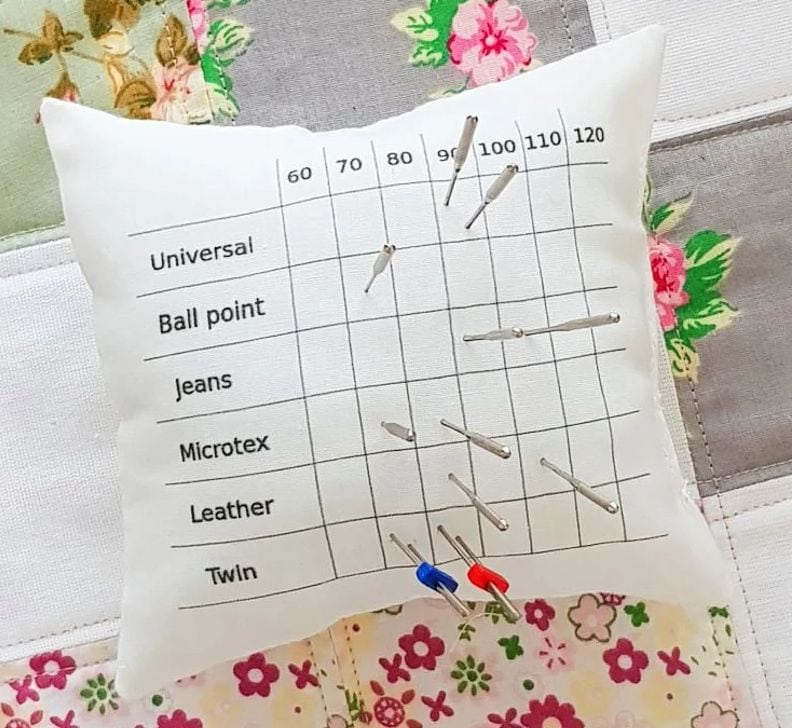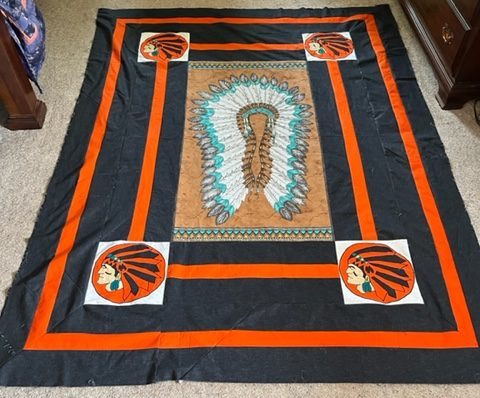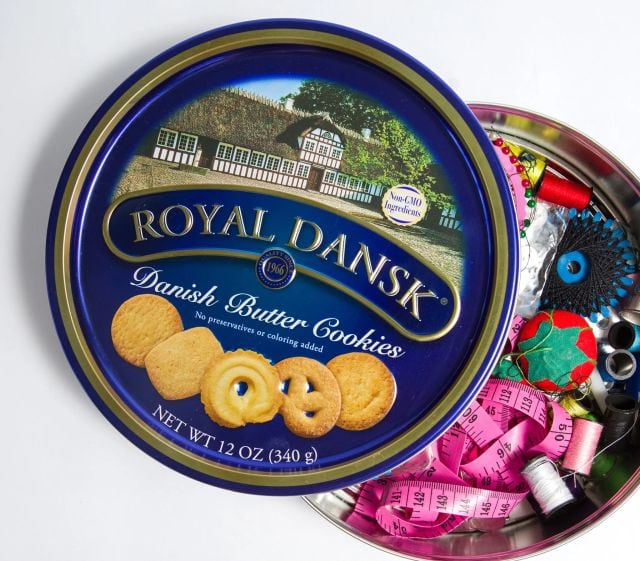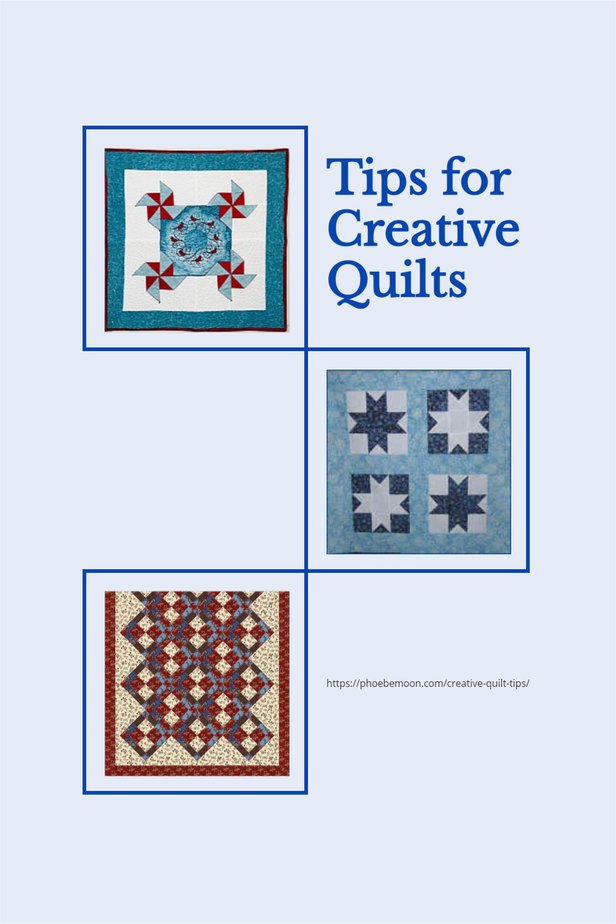*This post MAY contain affiliate links. That means that if you make a purchase after clicking on a link I may earn a small commission at no extra cost to you. I don’t ever recommend something that I don’t use myself. Not all links are affiliate links. For more information, see our Privacy Policy.
Stretching Your Quilting Wings
AKA Thinking outside the block
Here are some tips for creative quilts. It’s time to try something new! Now is the time for you to challenge yourself to try piecing or quilting something outside your comfort zone.
Yes, I know, there is a reason the comfort zone is so cozy. There is nothing unexpected there, nothing you need to worry about. No one will criticize you for anything you create in your comfort zone because you do it all so well. There is absolutely no reason to leave your place of contentment.
Except…you don’t really know what you are missing, do you? Learning a new favorite technique, creating something unexpected, discovering an original design – this only happens when you step outside your comfortable home and venture into the wilderness.
Yes, you will make lots of mistakes. Lots and lots of mistakes. Don’t be afraid of them, they are good things! Consider them all constructive criticism. Remember Thomas Edison who said, “If I find 10,000 ways something won’t work, I haven’t failed. I am not discouraged, because every wrong attempt discarded is often a step forward….”
Everything you do backward today will be a funny story tomorrow:-))
Experimenting with a new idea need not be a lifelong commitment. You tried it, worked hard enough to know how to do it well, and still don’t like it. After all that work, what did you gain?
In a word, confidence. You did it, even though that little voice in your head said you couldn’t do it. Or maybe you didn’t do it precisely the way “everyone” said you should do it, you did it your own way. Hooray! You didn’t give up and now you have the confidence to work through another challenge. Isn’t it great to know that you now have the ability to make a decision based on what you want to do – or want to challenge yourself to do – rather than the only thing you know how to do?
In her book, It’s Okay If You Sit On My Quilt, Mary Ellen Hopkins encouraged quilters to try the unusual, not just stick with the tried and true. Sometimes she imagined the possibilities with graph paper and colored pencils, and sometimes she just sewed until she got done. If she didn’t like it, she cut it up and put it together in a new way. Sometimes it’s fun not to know the ending to a story.
The No Whining Quilt
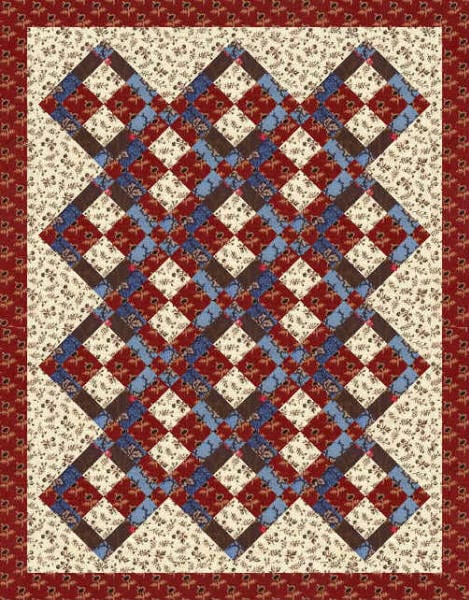
Let me tell you about a class I once created called the No Whining Quilt. This was in the mid-’90s when the internet was in its infancy and quilters still drew inspiration from each other in classes and workshops.
In this class, I encouraged students to think outside the box – to come up with new ways of creating blocks and putting them together. We started with what is now called the disappearing nine patch. As a group, we experimented with different ways to color the nine patches, and different ways to put them together.
After that, we would come up with different blocks to cut apart – not necessarily in fourths – and sometimes we would put different blocks together, cut them up, and put them back together again.
Sometimes we would add unrelated blocks like a half square triangle block or a churn dash as an alternate block. Sometimes we would add a three-dimensional element. Many, many times we created ugly, unworkable blocks. But every single solitary time I taught one of these classes, someone would come up with something that was completely original.
Bias Blocks
The method I call “Bias Beauty” was created in one of those classes, as was the faux cathedral window. Now, I would love to take credit for all these blocks but the truth is that we all came up with them together. In fact, we came up with so many ideas that I finally split the class into three sections: the original No Whining; Stripper Club; and Piecing in the Third Dimension.
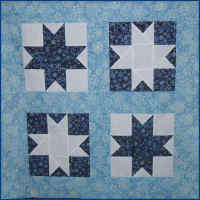
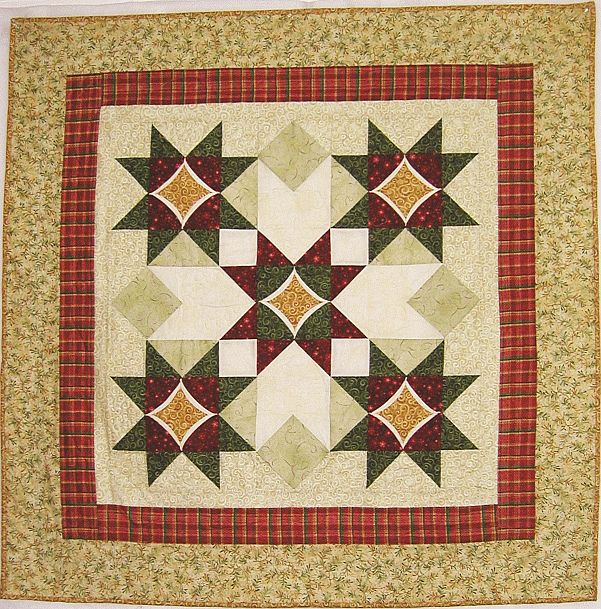
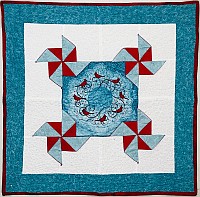
You can do the same without a workshop, although truthfully, it does help to have someone to bounce ideas around with. I would like to encourage you to choose one of the ideas below and experiment with it. You don’t need to use your best fabric, although I do have to warn you the colors you choose will greatly influence your perception of the final product.
You don’t need to create an entire quilt. A block will do just fine, or a placemat or tablecloth if you want to see a repeating design. If you like your practice piece, you can always use it for a potholder, pocket on an apron, bird cage cover, doll quilt, pillow or other home dec project.
This month, step outside your comfort zone and try new techniques. You never know which will become your new sewing passion until you try.
Break the Quilting Rut – More Tips for Creative Quilts
Here are some ideas to inspire you:
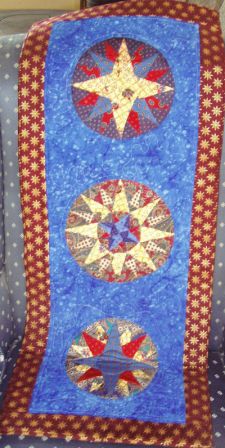
- Use an unusual (to you) fabric for piecing a quilt. For example: wool or silk; blue jeans; t-shirts; photos on fabric; selvedges or men’s ties. Each type of fabric will present new challenges. Rather than cut up good fabric, try the local charity store for cast-off clothing.
- Set a block on point.
- Do a row-by-row quilt with a group of friends. You need not create an entire row. Perhaps one of you could create the original block and everyone else could add a border or embellishment.
- Create a tessellating block.
- Create a quilt in which the sashing is the focal point of the quilt. Or perhaps the blocks continue into the border. The book Soft-Edge Piecing explores this technique with applique, although you could piece it.
- Experiment with curved piecing. Use a circle in a quilt, or make a Drunkards Path.
- Applique a bunch of colorful circles on a white background. Use a different method of applique for each circle. When you are done, use this top to practice machine quilting.
- Create a top with one or more three dimensional elements. Use this top to practice hand embroidery or adding embellishments like beads, bedazzles, yo-yo’s or ribbons.
- Create a quilt that is not square or rectangular. Give it rounded corners, or perhaps make the whole quilt round.
Idea: Give a quilt an unusual border and/or binding. How about a scalloped border or a two-part binding? The book Happy Endings: Finishing the Edges of Your Quilts is a wealth of ideas. - A quilt of illusion, made from scraps. You will need your graph paper and colored pencils for this one.
- Choose a name for a block, then create the block. Pick a random word like “wind chime” and design a block for it.
- Try a batting you don’t normally use.
More Creative Quilting Ideas

- Tie a quilt with an unusual (to you) method. How about buttons or bells at each tie?
- Hand quilt something, even something small. Hand quilting is a great way to add accents and personalize a quilt
- Try thread painting.
- Buy or borrow a specialty ruler and use it to make something small. Think X block, twister ruler, stack n whack, kaleidoscope, etc.
- Use only ugly fabric (and a background) in a quilt. Remember, if you think it’s ugly, you haven’t cut it small enough yet.
- Quilt with a color you have never tried. Black, yellow, chartreuse.
- Give yourself a time limit or a fabric limit. Perhaps restrict yourself to only scraps.
- Stone Soup Quilt. Ask your friends to give you fabric for a quilt. Don’t give them any clues as to what you want – whatever they give you is what you have to use.
- Do a mystery quilt.
- Learn and use a classic technique such as smocking or lace crochet.
- Color a quilt with fabric crayons.
- Stencil a quilt design instead of applique. These can look spectacular.
- Learn at least two methods of paper piecing. Author Anita Grossman Solomon has discovered several of these.
- Create a quilt that illustrates the Fibonacci sequence (or other math idea, such as Pi)
- Take a block and enlarge it. Or miniaturize it.
- Take an orphan block and cut it apart into four pieces, six pieces or eight pieces. Rearrange them and put the back together again.
- Idea: Sew a 2″ frame around a block, then cut the block on an angle. You have a topsy turvey block! This is a great way to resolve problems when all the blocks aren’t the same size in a block swap.
- Bias Beauty a block. Take a pieced block and an unpieced block and sew them into a pillow by sewing all around the outside, then cut on an X.
- Try a unique Quilt Sleeve
- Celebrate the fact you can think outside the Quadrilateral Parallelogram!
Have another tip to offer? Send it to me or reply below and I will add it here.
Don’t forget to sign up for the newsletter! Once a week, I send updates on quilt-related information I have found while wandering the web. This might be an inspiring article, a tip or tutorial I have discovered (or written), and occasionally exclusive offers & discounts as well as immediate access to the secret page of free patterns, guides, and printables. You can follow my page on Facebook, or join the Make Believe Quilters group, too.
